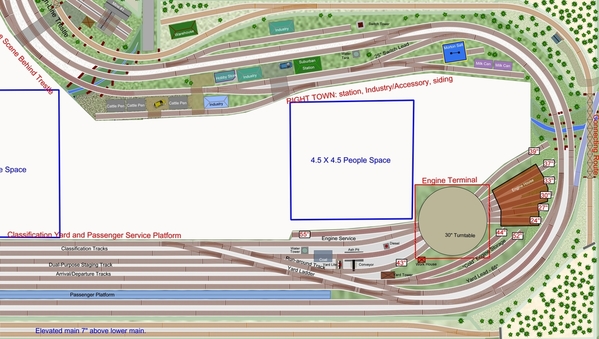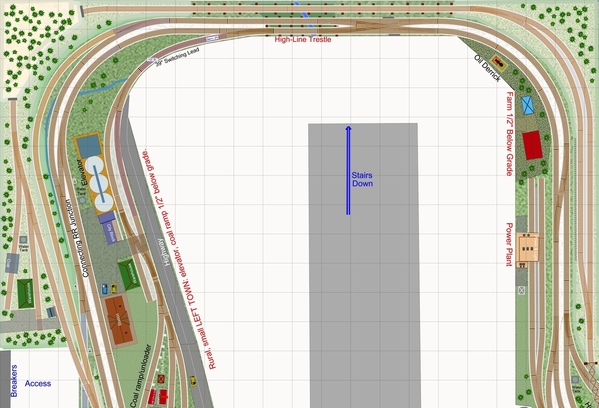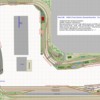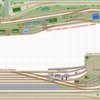I am leaning toward this solution for a single connecting grade and junction between the High-Line and the mainlines:

This junction design preserves all of the good features worked in so far (passing tracks and the connecting road junction). The new curved turnout making the connection, is level at 1-1/8" elevation, with grades of about 1.75% on the outside mainline between the new turnout and the cross-overs in either direction. The slope from the new curved turnout up to the high line is 3.7% - perhaps OK for this operation. The turnout length is about 2', so that is a level spot of about 2' between grades.
On the inside main on the parallel curves, I brought the line up to 1/2" in elevation, with grades of about 1.1%, so that the terrain slope continues from the high point above the tunnel down through the three tracks each at a different level, then following the stream to the switching lead serving the town. The switching lead (now 39" long) descends to -1/2" in the town itself (at about 1.5% grade), for a pleasing and convincing look to the scene.
Jan, there is already a mine on the High Line, near the connecting road track. Rather than mining coal, I thought that perhaps the railroad would benefit from some diversity, with some other ore - perhaps copper. Then in the far right town, a small smelter operation could be added to receive the ore (where the Morton's Salt tower is currently). Giving a reason to move trains from the high line to the main level.
With just a single direction connection, and no way to turn trains on the High Line, trains will have to back down the grade at some point, or use one of the passing tracks to run a locomotive around the train, so that the engine descends at the head of the train. Adding Option D will solve this problem, and it would seem to be possible to preserve the passing track, by angling and pulling the mainlines toward the aisle, at the expense of the farm, so as to stay within the current benchwork limitations without compressing the aisle.




























